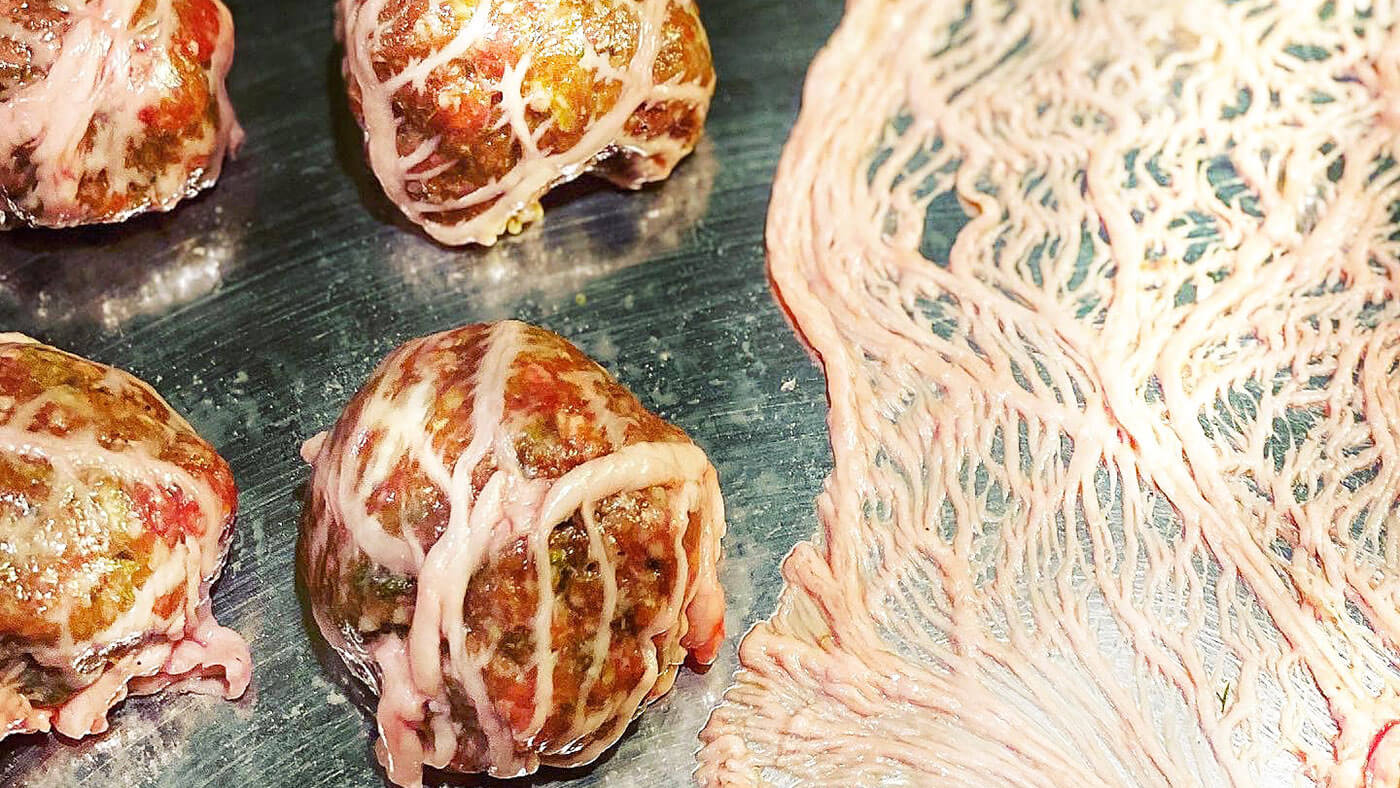- Savage Blog
- How to Use Caul Fat to Elevate your Wild Game Cooking
How to Use Caul Fat to Elevate your Wild Game Cooking
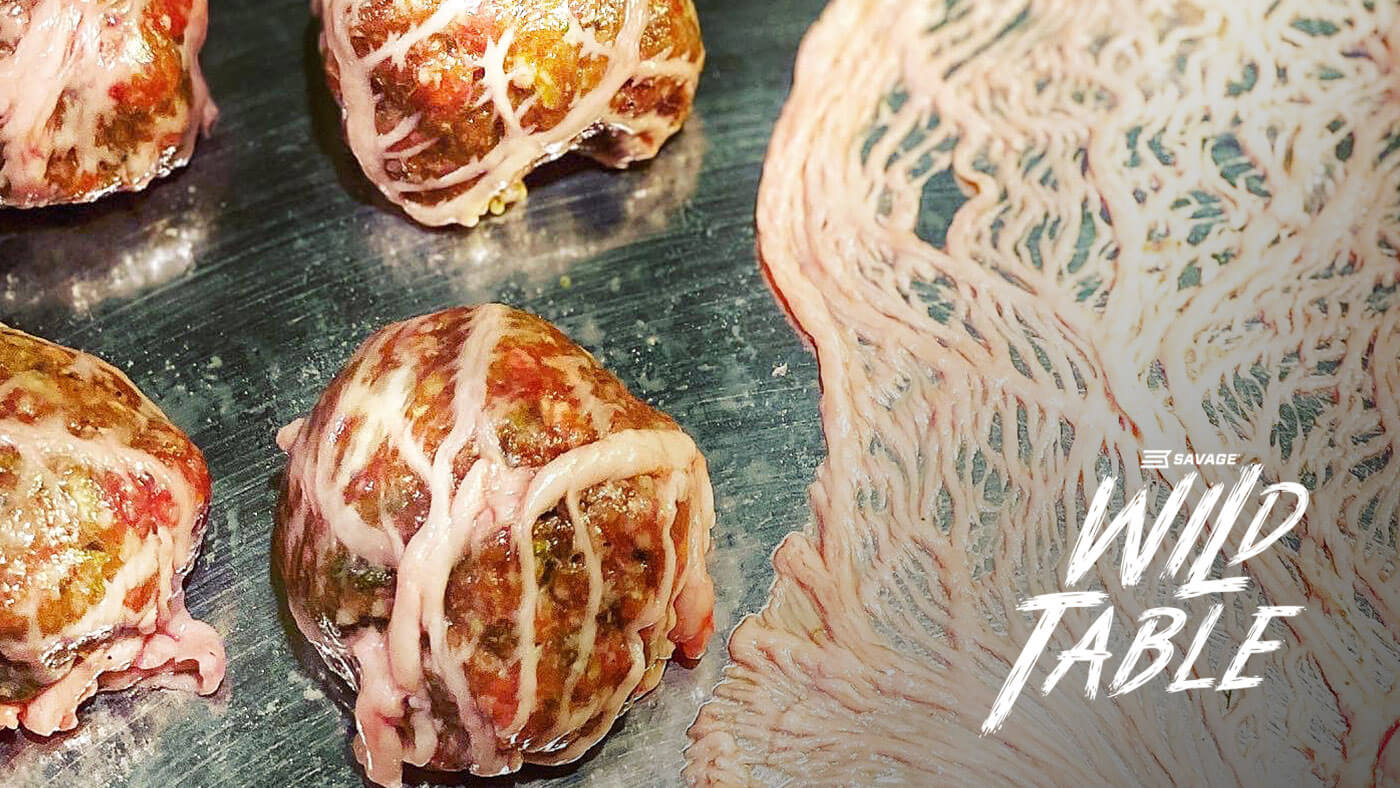
Throughout history, many parts of the animal that we often overlook today were used out of necessity. But their inclusion isn’t merely a matter of grim survival; they were also cherished for their flavor and utility. One ingredient often forgotten in modern kitchens is caul fat, also known as lace fat. This thin, web-like membrane surrounds the internal organs of animals including deer, cattle, sheep, and pigs. It can enhance flavor, retain moisture, and shape food. For hunters (and anyone else who appreciates unique ingredients), caul fat is both a hidden treasure and a revelation. In this piece, I’ll share the methods I use to extract, store, and cook with this fat to transform it from something discarded into an essential part of your kitchen.
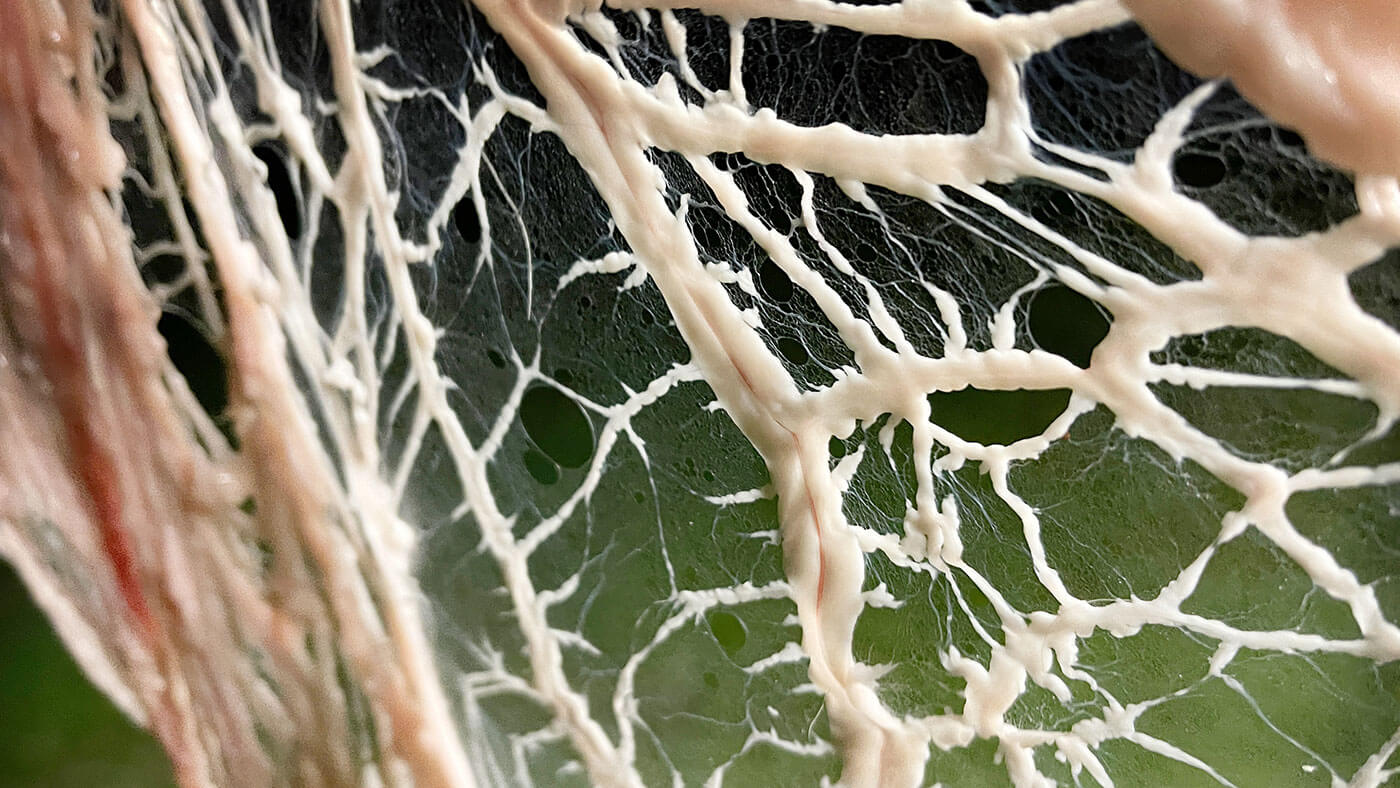
Extracting Caul Fat
To retrieve caul fat from a harvested animal, you need to pay close attention during the gutting process. As you work, you’ll notice a fine, lacy membrane surrounding the stomach. This is the caul fat. Gently make small incisions where it connects to the spleen, taking care not to puncture the intestines. Slowly peel the fat away from the organs, being mindful of where it connects near the diaphragm and the tenderloins. As you lift it, the delicate membrane will feel smooth and slightly elastic under your fingers, almost like lifting a vast rubbery doily. Aim for larger sections, though some tears are inevitable, caul fat is self-adhesive, so these can be patched together when wrapping food.
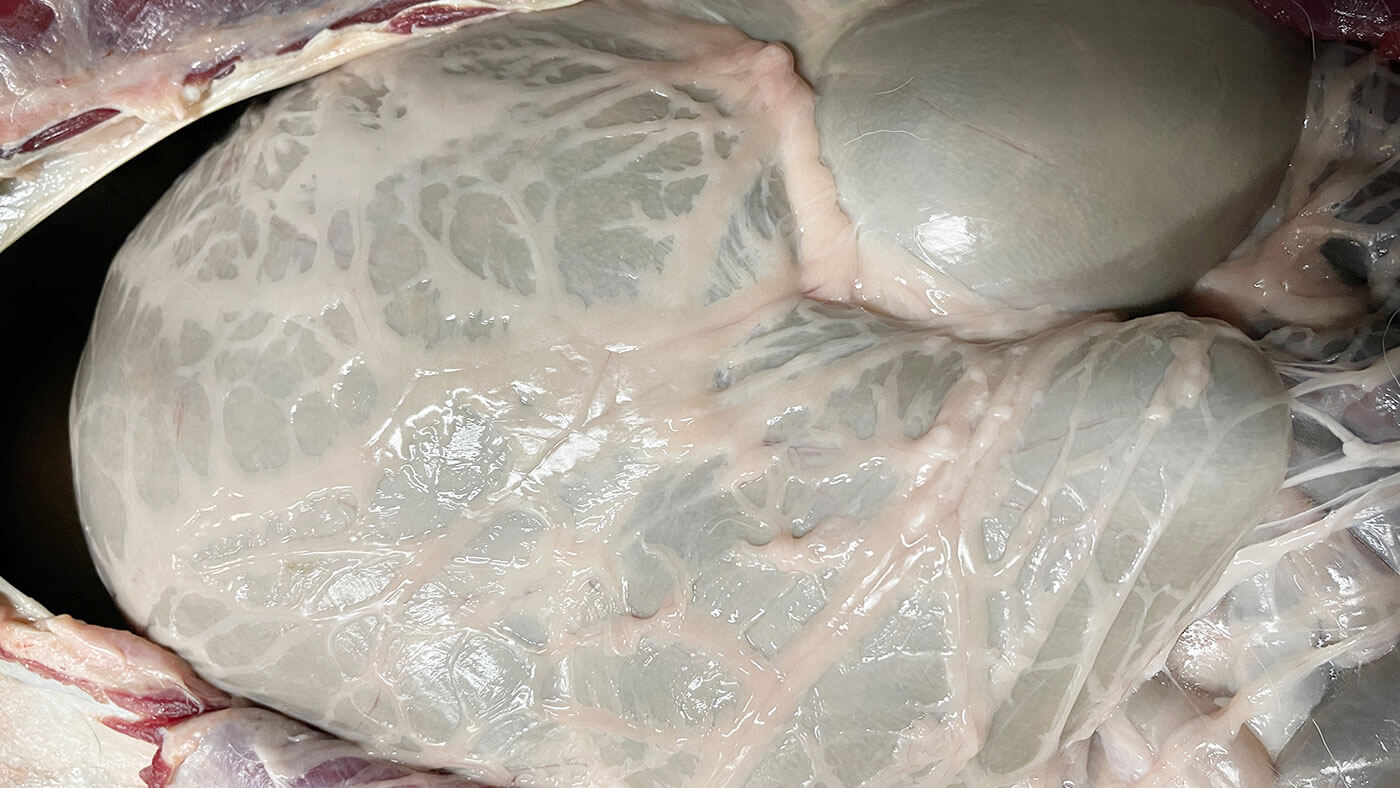
Once you’ve removed it, place it in a bag or container. It’s delicate and will need some care, but the payoff is worth the effort.
Processing and Storing
Back in the kitchen, cleaning the fat is straightforward. Rinse it thoroughly with cold water to remove any debris. If it has a faint odor, soak it in warm water mixed with a bit of vinegar or salt to help draw out impurities. After an hour or so in the fridge, rinse it again and pat it dry.
Once it’s cleaned, you’ll notice the fat becomes slightly translucent, resembling a fine mesh of tissue that glistens in the light. Its smooth, elastic texture makes it pliable but still delicate to the touch.
For storage, lay out a sheet of plastic wrap, place the caul fat on it, and cover it with another layer. Gently press out any air bubbles and vacuum-seal the whole package before freezing. Because fat oxidizes quickly, try to use caul fat within a year, although I’ve stretched that limit to two without losing much quality.
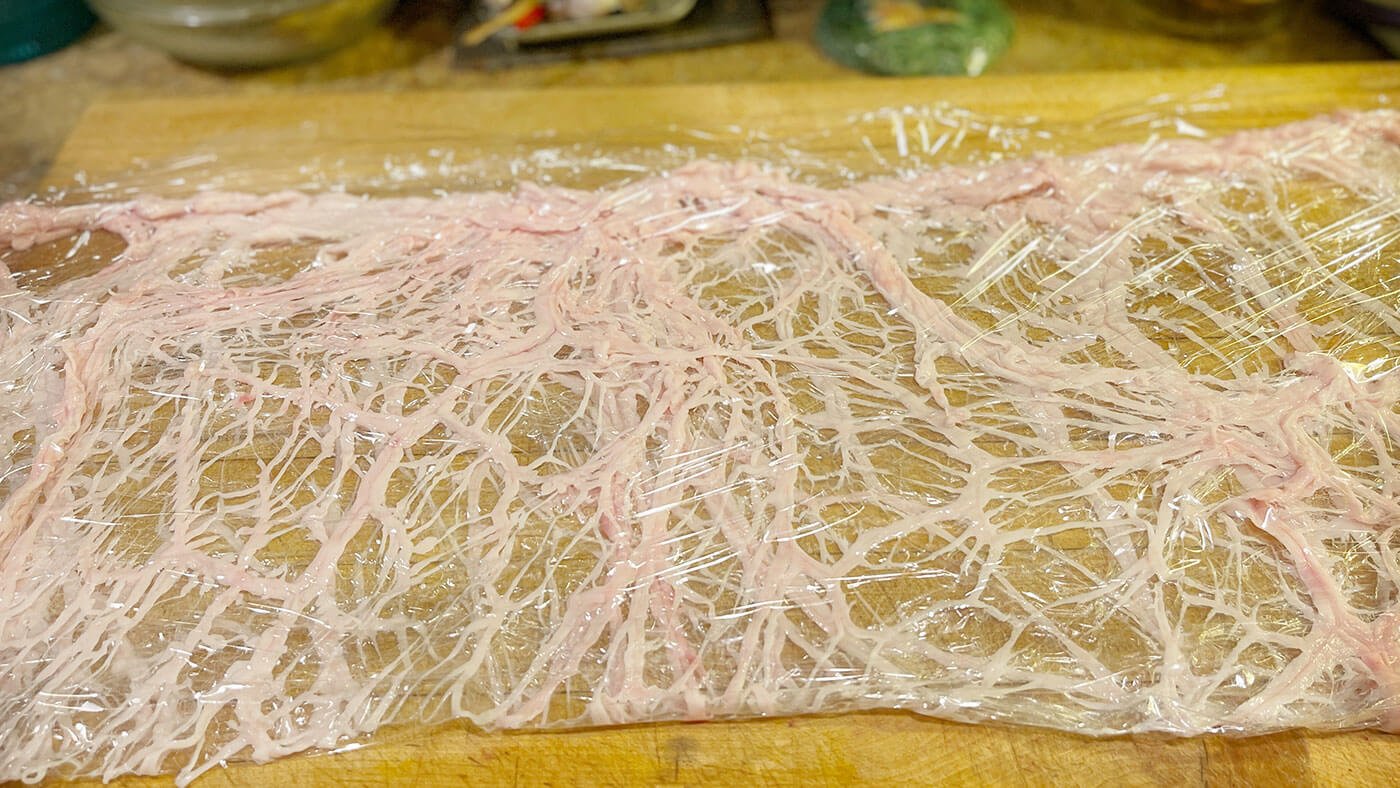
Culinary Uses
Once you’ve stored your fat, you’ve got an incredible tool for the kitchen. Historically, some cultures considered lace fat a delicacy, often wrapping it around the heart of an animal to honor a successful hunt. Today, you can use it in a similar way to elevate your cooking. It’s perfect for wrapping lean meats like rabbit or venison, as the fat keeps the meat moist and offers a rich flavor as it melts.
As caul fat hits a hot pan, the first thing you’ll notice is the sizzle—the fat starts melting immediately, releasing a savory aroma that fills the kitchen. It renders quickly, becoming a golden-brown crust that locks in moisture. The fat almost disappears as it cooks, basting your meat in its own juices, leaving behind a succulent, crispy golden layer that enhances both texture and flavor.
You can also use it for roasts, sausages, meatballs, or even fish. Defrost it in the fridge a day before cooking and soak it in lukewarm water to make it more pliable. Lay it flat, cut it into the size you need, and wrap it around your chosen ingredients. When you cook it, place the seam down in the pan to seal the wrap during the sear.
In French cuisine, lace fat is essential for making crépinette, a small sausage or patty wrapped in this delicate membrane and pan-seared until crispy. In Mediterranean cooking, it’s often used to wrap faggots or meatballs, creating a self-basting layer that locks in moisture.
For a more rustic approach, use the fat to wrap whole roasts or game birds such as quail or partridge. Wrapping any lean cuts of game meat or fish in caul fat helps retain moisture, ensuring the proteins stay tender and juicy throughout the cooking process.
This fat is a versatile and often overlooked treasure. With a bit of care and creativity, it can add both moisture and flavor to your dishes. Next time you're dressing out your game, remember that delicate lace fat might just be the secret ingredient you’ve been missing.
Spicy Venison Meatballs Wrapped in Caul Fat
Ingredients:
- 1 lb ground venison (or your favorite game meat)
- 1 small onion, finely chopped
- 2 cloves garlic, minced
- 1 small jalapeño, finely chopped (remove seeds for less heat)
- 1/4 cup breadcrumbs (or almond flour for gluten-free)
- 1 egg, lightly beaten
- 1/4 cup grated Parmesan (optional)
- 1 tsp smoked paprika
- 1 tsp cumin
- 1 tsp red pepper flakes (adjust to taste)
- 1/2 tsp cayenne pepper (optional for extra heat)
- 1 tsp salt
- 1/2 tsp black pepper
- 2 tbsp fresh parsley, finely chopped
- Caul fat, defrosted and soaked in warm water to soften
- Lard (or olive oil) for cooking
Instructions:
- Prepare the Caul Fat: If frozen, defrost the caul fat in the refrigerator overnight. Soak it in warm water for about 5 minutes to make it more pliable. Lay the fat flat on a clean surface and cut it into pieces large enough to wrap each meatball.
- Mix the Meatball Ingredients: In a large bowl, combine the ground venison, chopped onion, garlic, jalapeño, breadcrumbs (or almond flour for a gluten-free version), beaten egg, Parmesan (if using), smoked paprika, cumin, red pepper flakes, cayenne pepper, salt, pepper, and parsley. Mix thoroughly until well combined.
- Shape the Meatballs: Form the mixture into 1 1/2-inch meatballs. You should get about 12-15 meatballs depending on size.
- Wrap the Meatballs in Caul Fat: Take a piece of fat and carefully wrap it around each meatball, ensuring the fat is secure around the entire meatball. The fat will naturally stick to itself, keeping the meatball wrapped tightly.
- Cook the Meatballs: Heat a large skillet over medium heat and add a tablespoon of lard or olive oil. Once the fat has melted and the pan is hot, place the caul-fat-wrapped meatballs seam-side down to seal the wrap. Sear the meatballs on all sides for 3-4 minutes per side until they are golden brown and crispy. Reduce the heat to low, cover the pan, and cook for an additional 8-10 minutes to ensure the meatballs are cooked through
- Serve: Once the meatballs are cooked through, remove them from the pan and let them rest for a couple of minutes then serve with your favorite side.
These spicy venison meatballs, wrapped in caul fat and cooked in lard, provide a wonderfully crispy exterior while keeping the meat juicy and flavorful on the inside. Perfect for those looking to add some rich, complex flavor to their next meal!
Are you a field to table foodie? Check out more of our wild game recipes and foraging tips on our Wild Table blog!

